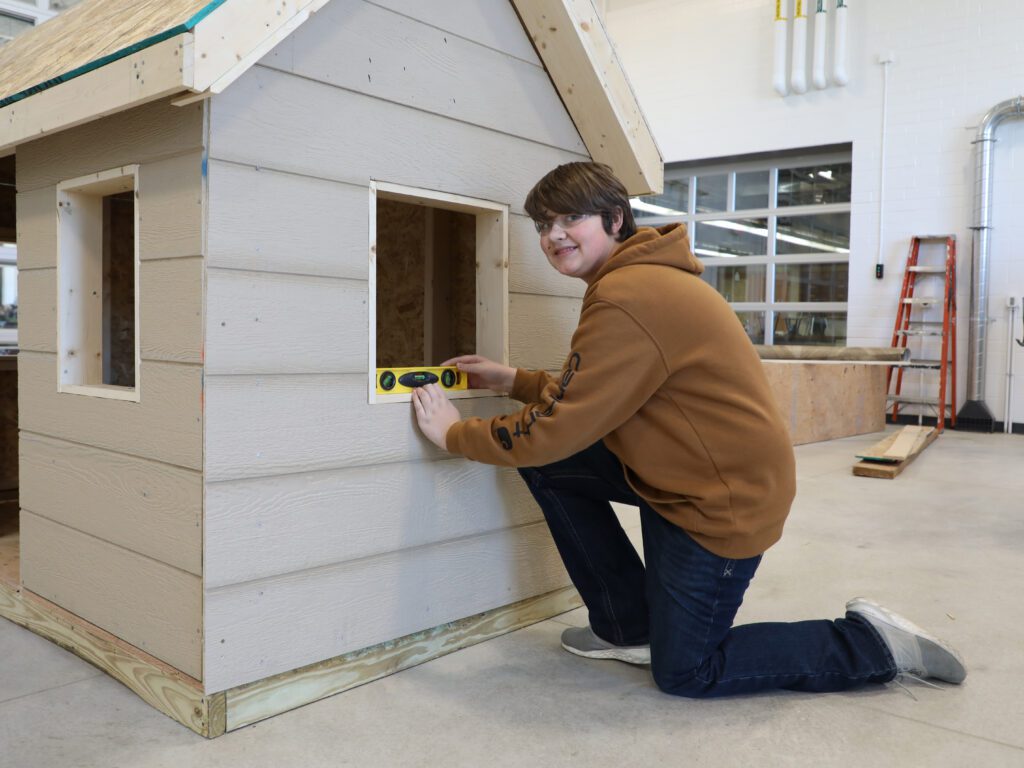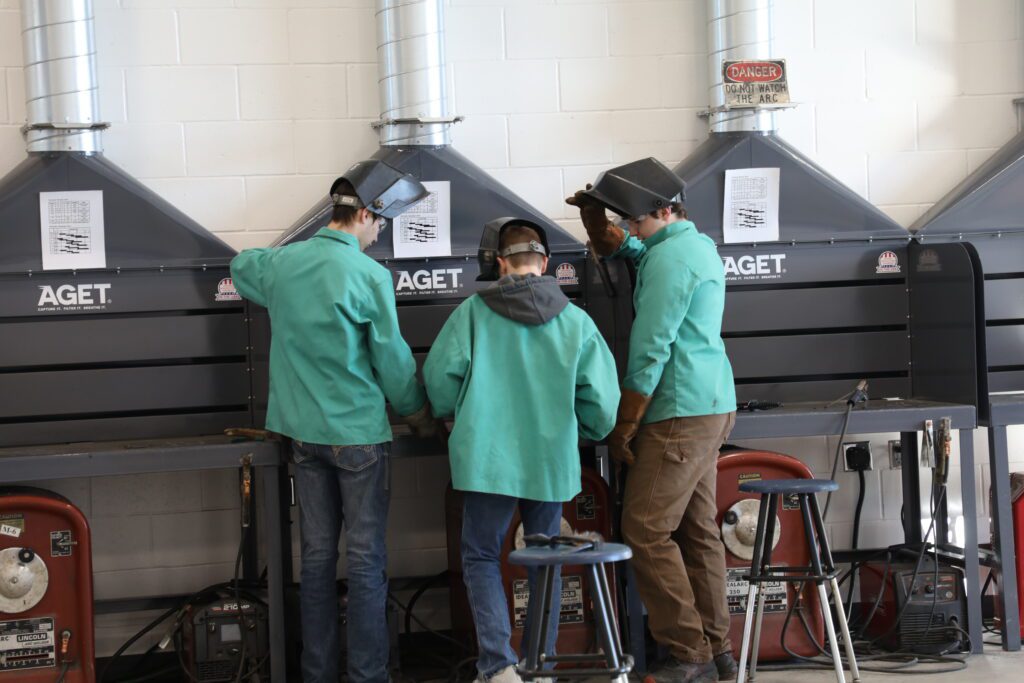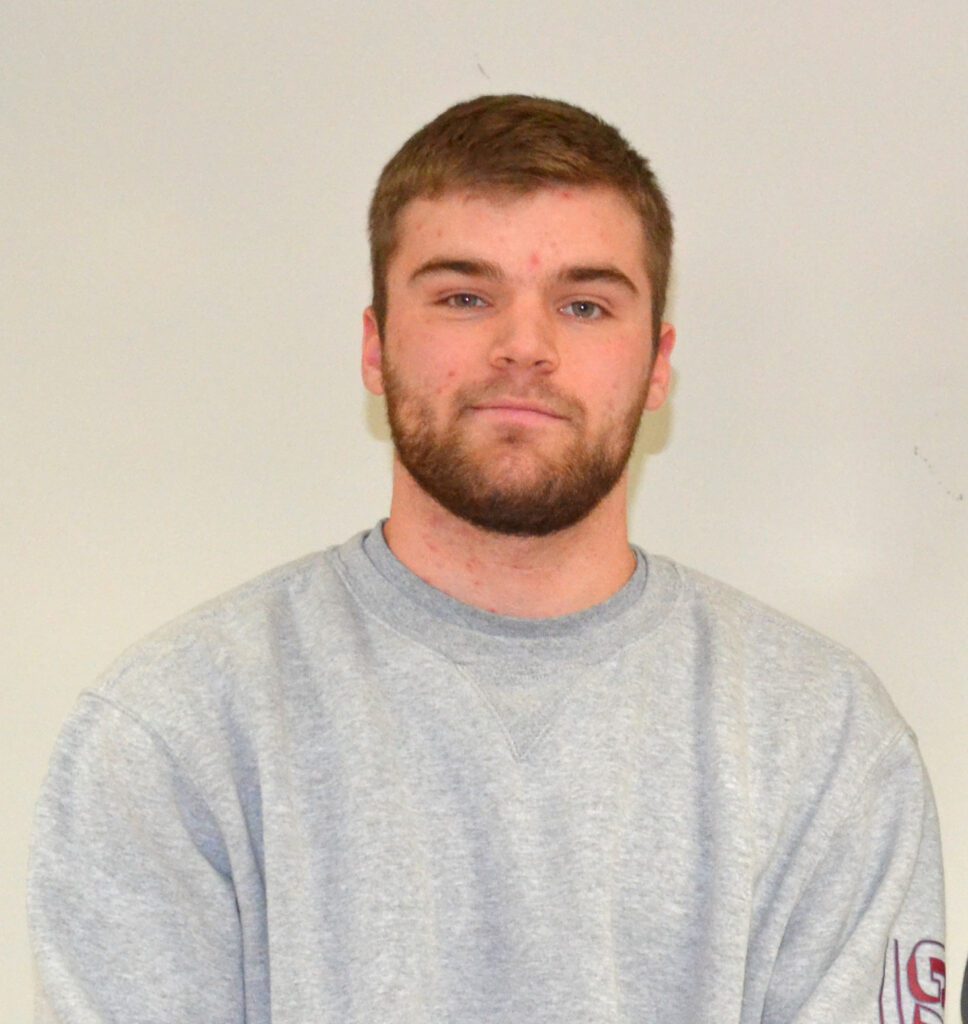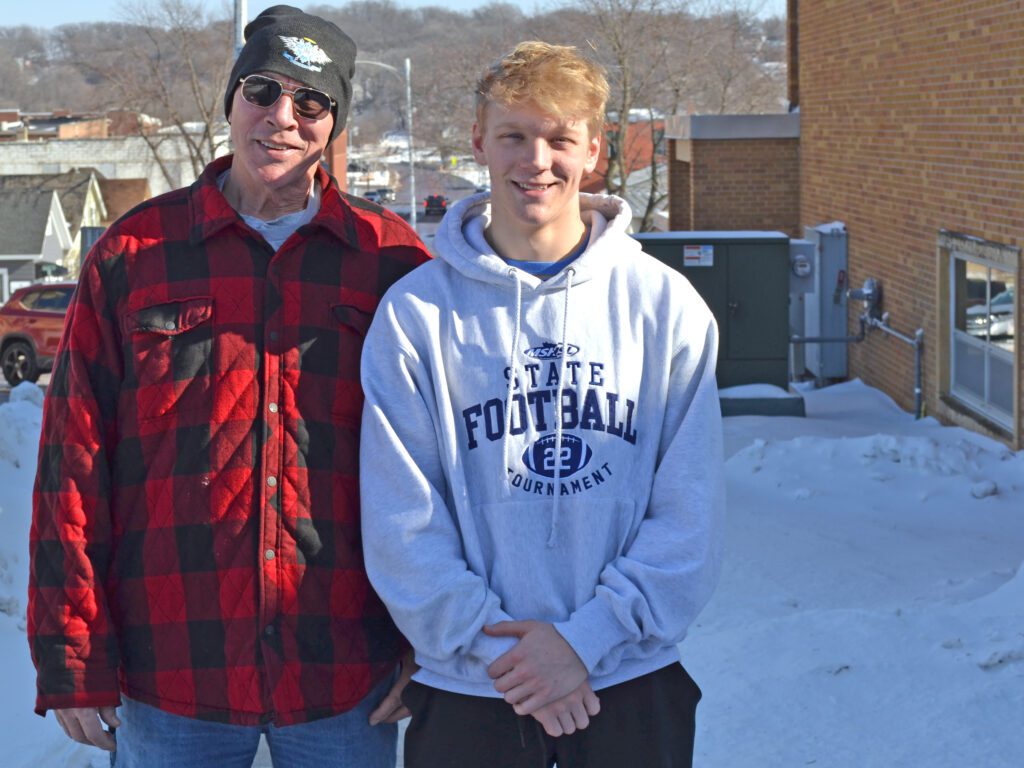
Career and technical education is evolving to help students navigate today’s world of work.
For decades, the conversation about jobs in our region focused on how to create more of them. Nearly 40 years of job shortages built up a narrative that encouraged young people to leave their hometowns for education and careers. Now employers need them back. The vacancy rate in southwest Minnesota has been one of the highest in the state since the Great Recession.
“There’s nothing in modern history to match what we’re experiencing today. This is a whole new era,” said Kelly Asche, senior researcher at the Center for Rural Policy and Development (CRPD) in Minnesota.
“In the past, we were talking about, ‘How do we get more jobs?’ Now it’s, ‘How do we get more people?’ This is the new conversation, and this is a very different conversation,” Kelly said.
Last year, Kelly and his colleagues published a report titled “The Journey to meaningful workforce participation among graduates in Southwest Minnesota.” It showed that the percentage of our region’s high school graduates that have meaningful workforce participation in southwest Minnesota grows quickly right after high school but settles at about 25 percent. That “meaningful workforce participation” refers to an individual employed for 1,000 or more hours with a single employer over one calendar year.
CRPD outlines the strategy for success based on the findings: Introduce kids early to careers that are available locally and incentivize higher education within the region, as local college grads – especially with two-year degrees – are more likely to have local jobs.
“Geography means something. Staying local is important to southwest Minnesota workforce needs,” Kelly said. “There are not enough students attending local colleges to fill local workforce needs.”
The report also showed that the more career and technical education (CTE) courses and achievements a student had, the more likely they were to be employed in the region. Gone are the days of a single semester in a careers class. Today’s approach in southwest Minnesota is an evolving network of partners all leaning in to strengthen students’ ties to the region and open their eyes to the possibilities around them.
Regional approach strengthens CTE
At the heart of the network is Launch Your Future Today (LYFT) Career Pathways, launched in 2018 with a goal of rebuilding career and technical education in southwest and west-central Minnesota. LYFT promotes the “3 Es Roadmap,” leading kids through career exploration, exposure and experience. Funding comes from a statewide Rural Career and Technical Education Consortium Grant approved by the Minnesota Legislature.
Eriann Faris leads LYFT as the CTE Project Coordinator for Southwest West Central Service Cooperative. LYFT brings together all the major players when it comes to careers: secondary education, post-secondary education, workforce development, businesses and economic development. Its advisory committee boasts 28 members, including Scott Marquardt representing Southwest Initiative Foundation.

“The advisory committee has so much value. LYFT has 18 counties and 53 school districts. It’s insightful to hear from all these people out there who are also partnering with these same folks, living or working in the communities,” Eriann said.
Since launching, LYFT Career Pathways has funded more than 90 projects and touched the lives of more than 20,000 students in southwest and west-central Minnesota. LYFT’s power is in partnerships, focusing the work of many groups in the same direction. One example is the Southwest Minnesota Private Industry Council (PIC). PIC’s Youth Career Connector Program serves multiple schools, bridging the gap between business and education.
“Back in 2016 we did an asset mapping gap analysis and found that our region has a shortage of career counselors in our school districts. And in addition to that, career counselors are really stretched in many different directions and struggle to find the time to provide career services,” said Carrie Bendix, PIC Executive Director and part of the LYFT Career Pathways Advisory Committee. “We do our best to reach all school districts. We have three Youth Career Connectors and we have a team of seven in our youth program.”
Youth Career Connectors provide career assessments, provide work readiness training with school districts, help plan a variety of career exploration events and create colorful labor market infographics to get students thinking about the skills they may need. Recently, they’ve increased effort on work-based learning opportunities like job shadows, business tours and internships.
Last year, Youth Career Connectors worked with 28 school districts, 200 employers and 4,056 students. Southwest Initiative Foundation awarded a $25,000 grant to help fund the Youth Career Connector serving Marshall, Minneota and Tracy. This grant was made possible, in part, through funding from Elwood (Woody) and Sanndy Miller.
SWIF and all its funds have invested more than $1 million in career pathways work since 2017, from sponsoring major career expos drawing hundreds of students to the purchase of welding safety equipment and funding hands-on FFA experiences.
“For us, supporting career pathways isn’t just a grant category, it’s embedded across our organization,” said Missy Maiers, SWIF Chief Administrative Officer. “We understand that thriving communities need thriving individuals, and that starts with ensuring everyone has access to meaningful career pathways.”
Husky Path leads the way to careers
Schools have stepped up their CTE offerings across the region, with some creative solutions. Jackson County Central Schools (JCC) is connected to LYFT through the advisory committee. While a lot of CTE focuses on high school students, JCC has programming aimed at its middle schoolers.
Middle school principal Chris Naumann was looking for ways to keep students motivated and interested when he piloted the idea of “Midmester,” more than a week of hands-on learning for students to try out new skills.
“Middle school is super hard. And if we can find ways to get [students] to engage in putting time and effort into schooling, it shows them that it can pay off in the future. It’s making middle school relevant to some students,” said Principal Naumann, adding that very few behavior issues come up during Midmester.
Just getting around a table and talking to people is a skill that we have all lost. Getting together and playing board games, listening to some of your elders talk. We focus a lot on test scores and all
Chris Naumann, JCC Middle School Principal
the state mandates, and we have to do that, but there’s other things that make us a well-rounded individual.”
The courses are always different, depending on what volunteers in the community are willing to teach. Generally, they fall into the categories of lifestyle; humanities; career exploration; and science, technology, engineering and mathematics (STEM). Kids have tried sign language, guitars, advertising campaigns, welding, small engines, autobody, carpentry and more. In addition to testing out skills for future careers, students build interpersonal skills and broaden their connections. In a recent course called “Moments to Remember,” students interviewed older adults in the community and wrote biographies.
In a school district survey, parents gave Midmester high marks. And students are eager to get first choice on the classes offered. “Very few behavior reports ever come out during Midmester time because kids are picking classes that they want to be in and learn more about. … It also curbs some
behavior pieces that sometimes we see in school because we’re giving kids choices,” Chris said.

Midmester’s success has been followed by increased investment in career and technical education at the high school level. “Husky Path” at JCC works to ensure all young people and workers have the skills and credentials to succeed in today’s economy.
A recent open house at JCC High School celebrated completion of a $3.5 million CTE addition and renovation project that added a construction and automotive lab, as well as updates to the existing metal lab. The project got a boost with a LYFT Innovation Grant that will better prepare students for working in the 21st-century fabrication industry. JCC, HitchDoc and AGCO Jackson Operations jointly applied for the funding to add a CNC plasma table at school, with training for students led by industry experts.
At the open house, local businesses toured the shop and learned about opportunities to be involved. Businesses can provide a student internship through work-based learning programs, offer technical assistance to CTE classes or even host a business tour. Southwest Private Industry Council helps facilitate the partnership, and PIC Youth Program Manager Maria Peters spoke at the CTE open house.’
“We serve as a liaison between the schools, the businesses and the communities,” Maria told local professionals. “We collaborate with schools and businesses to make sure we can eliminate any barriers the students may have.”
It’s about connecting kids to the options that are available right in front of them.
“We tell our students, ‘You can be an engineer. You can be in H.R. You don’t have to leave the area,’” said JCC Schools Superintendent Barry Schmidt at the event. “We are excited about the partnerships we can build.”
“We want to help benefit an improved sense of purpose and pride in the community, and increased engagement with students,” Barry said.

Ben Spaeth is a senior at JCC and has been enjoying the new CTE shop space during his Geometry in Construction class. The class puts students in charge as architects and construction managers of a project, translating basic geometry concepts into construction skills.
“It has been really beneficial with getting some basics,” Ben said, like reading construction plans and measurements.
Plus, he appreciates the hands-on learning. After graduation this spring, Ben plans to study carpentry at a nearby community college.
“I’ve enjoyed my time here. High school has been a good experience,” Ben said. .
CEO connects students to community
In addition to space in the school to explore careers, JCC offers students experiences outside the building. One is the new Cottonwood Jackson Creating Entrepreneurial Opportunities (CEO) program that takes juniors and seniors from three schools, including Mountain Lake and Windom, into
businesses to get an in-person look at local opportunities. They also get an individual mentor who helps guide them in real life learning experiences.
Quinn Landherr is a junior and part of the inaugural Cottonwood Jackson CEO cohort. He’s interested in a career as a chiropractor but has appreciated all the business tours – even the grain elevator, which he didn’t think he would find interesting until he got inside.

“The CEO program gives us tons of connections. It’s a great opportunity for students to experience what it’s like in the real world,” Quinn said.
There are seven CEO programs that have started in southwest Minnesota, and SWIF has supported each of them, investing $129,760. CEO prepares kids to be responsible, enterprising individuals who become entrepreneurs or entrepreneurial thinkers and contribute to economic development and sustainable communities.
Cottonwood Jackson CEO students have taken things a step further. Partnering with the Jackson Snow Angels, a free snow removal service serving older adults, the program is giving back to the community that supports their education. Quinn helps coordinate student volunteers during a snowfall and led the initial volunteer sign-up, recruiting more than 40 students who wanted to pitch in.
“These kids [in CEO] are absolutely the cream of our school,” said Paul Spence, who leads the Jackson Snow Angels and works with Quinn. “I don’t see any high school that shouldn’t have a program like this.”
“They’ve given us the opportunity to reach other students in our community and the connection with other age groups,” Quinn said. “We students are the future of Jackson County.”




